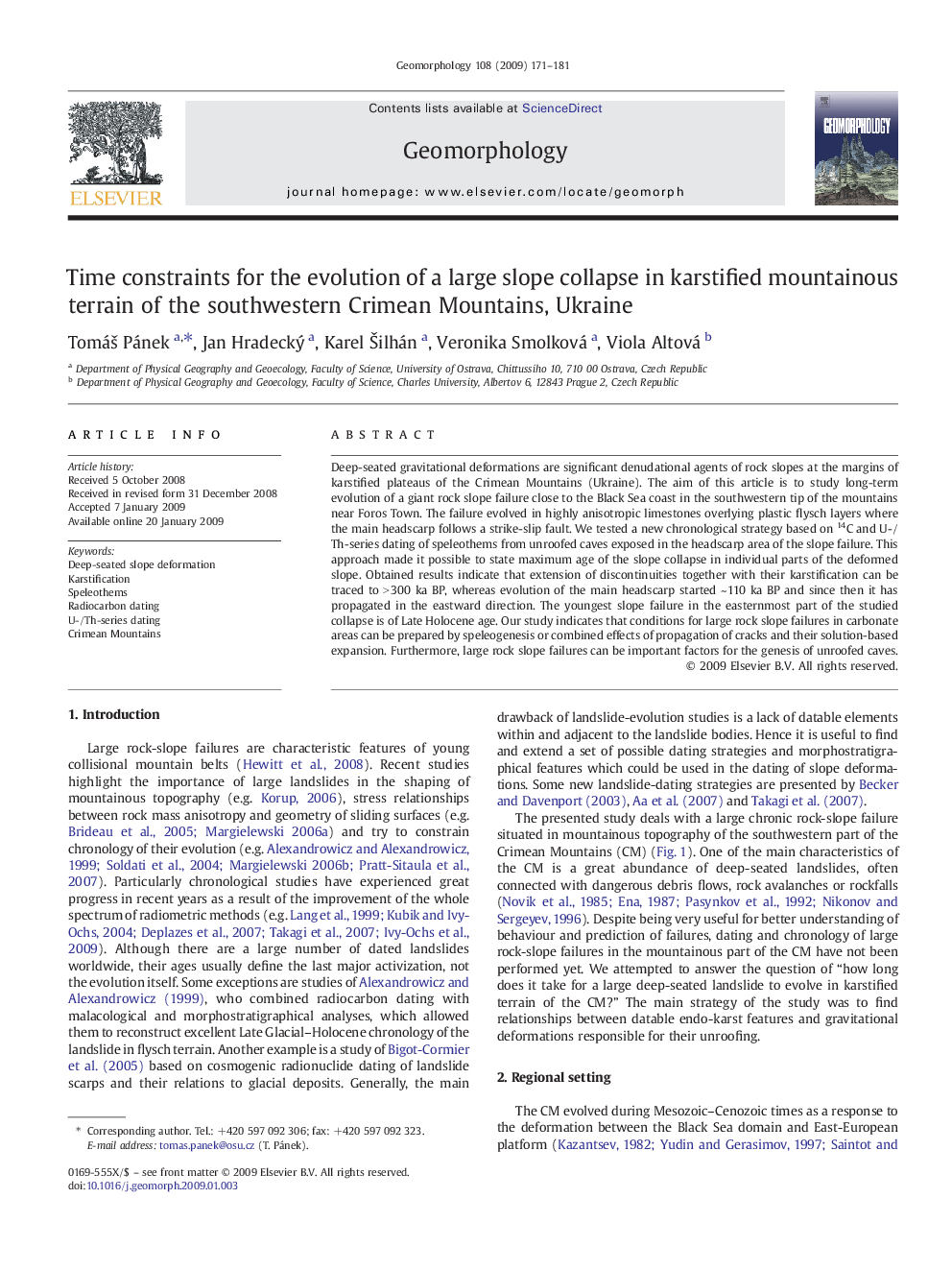| Article ID | Journal | Published Year | Pages | File Type |
|---|---|---|---|---|
| 4686376 | Geomorphology | 2009 | 11 Pages |
Deep-seated gravitational deformations are significant denudational agents of rock slopes at the margins of karstified plateaus of the Crimean Mountains (Ukraine). The aim of this article is to study long-term evolution of a giant rock slope failure close to the Black Sea coast in the southwestern tip of the mountains near Foros Town. The failure evolved in highly anisotropic limestones overlying plastic flysch layers where the main headscarp follows a strike-slip fault. We tested a new chronological strategy based on 14C and U-/Th-series dating of speleothems from unroofed caves exposed in the headscarp area of the slope failure. This approach made it possible to state maximum age of the slope collapse in individual parts of the deformed slope. Obtained results indicate that extension of discontinuities together with their karstification can be traced to > 300 ka BP, whereas evolution of the main headscarp started ~ 110 ka BP and since then it has propagated in the eastward direction. The youngest slope failure in the easternmost part of the studied collapse is of Late Holocene age. Our study indicates that conditions for large rock slope failures in carbonate areas can be prepared by speleogenesis or combined effects of propagation of cracks and their solution-based expansion. Furthermore, large rock slope failures can be important factors for the genesis of unroofed caves.
